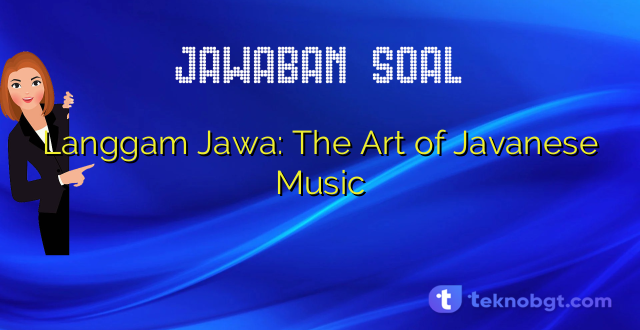Langgam Jawa is a traditional music genre that originates from the island of Java, Indonesia. It is a form of art that has been passed down through generations and is still widely appreciated by many people today.
History
Langgam Jawa can be traced back to the 19th century, during the reign of Sultan Hamengkubuwono III in Yogyakarta. It was created as a form of court music and was primarily used for royal ceremonies and events.
Over time, Langgam Jawa evolved and became more accessible to the public. It was performed in various settings, including weddings, religious ceremonies, and community events.
Characteristics
Langgam Jawa is characterized by its slow and melodic tempo, which is accompanied by traditional Javanese instruments such as the gamelan, siter, and kendang. The music is usually accompanied by vocals, which are sung in the Javanese language.
The lyrics of Langgam Jawa songs are usually about love, nature, and everyday life. They are often poetic and metaphorical, and are meant to evoke emotion and reflection.
Significance
Langgam Jawa is an important part of Javanese culture and heritage. It is a form of art that reflects the values, traditions, and beliefs of the Javanese people.
Through Langgam Jawa, people can connect with their roots and ancestors, and gain a deeper appreciation for their cultural identity. It is also a way to preserve and promote traditional art forms, and to pass them on to future generations.
Modernization
In recent years, Langgam Jawa has undergone a process of modernization. It has been fused with other music genres, such as pop and jazz, to create a new style of music that appeals to younger audiences.
While this has helped to keep Langgam Jawa relevant and popular, it has also raised concerns about the preservation of traditional art forms. Some believe that the fusion of Langgam Jawa with other genres dilutes its cultural significance and authenticity.
Future
Despite these challenges, Langgam Jawa continues to thrive and evolve. It remains an important part of Javanese culture, and is still widely performed and appreciated today.
As long as there are people who appreciate and value traditional art forms, Langgam Jawa will continue to be a part of the cultural landscape of Indonesia.
Conclusion
Langgam Jawa is a beautiful and unique form of art that reflects the values, traditions, and beliefs of the Javanese people. It is an important part of Indonesia’s cultural heritage, and is still widely appreciated and performed today.
Through Langgam Jawa, we can connect with our roots, preserve our culture, and pass on our traditions to future generations.
ArtikelLanggam Jawa: The Art of Javanese Music
© Copyright 2023 TEKNOBGT.COM














